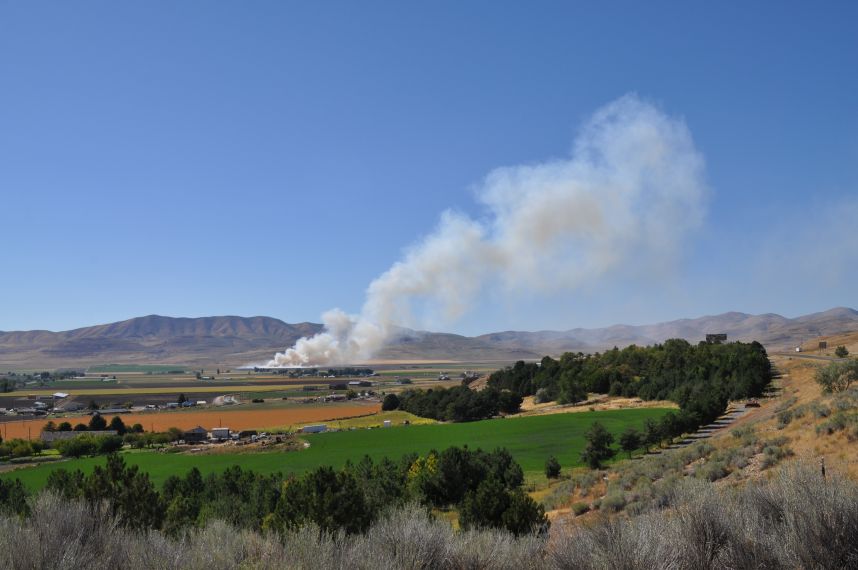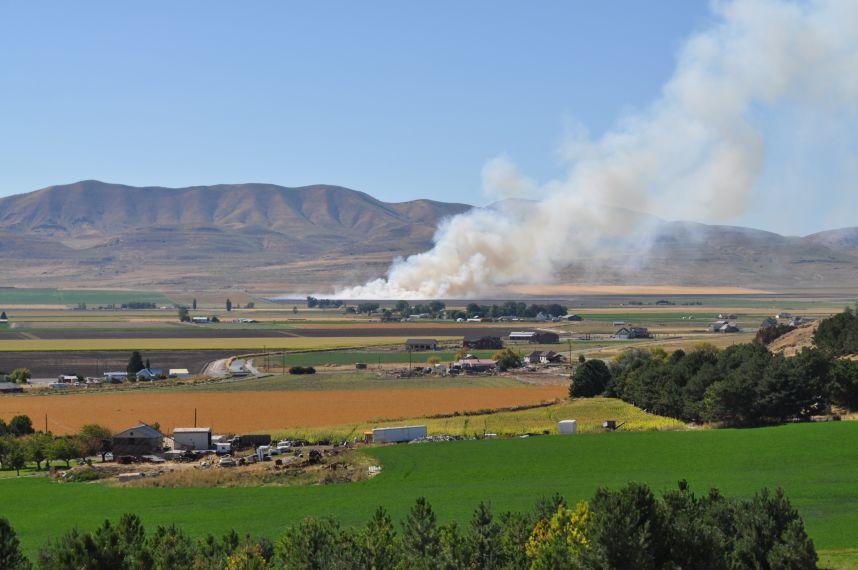Sep 042010
A standard practice around these parts is to burn farm fields after harvest. I gather it’s to clear the field so that the next year a different crop came be plants (crop rotation is the norm). In any event, it’s sometimes rather apocalyptic-looking, with hundreds and thousands of acres roaring away, shooting giant plumes of smoke into the sky. As seen below, there’s also a certain beauty to it, when the colors are just right.
8 Responses to “Farm Fire”
Sorry, the comment form is closed at this time.


That’s done up here all the time also…sometimes on windy days so that the fire spreads and the rural fire department gets a call, no matter how many times farmers get warned about not doing it in windy conditions.
Besides clearing the field for new crops next year, the burning returns the minerals in the crop stubble to the soil, making it more fertile and needing less fertilizer for the next crop.
We used to burn off brush in the pine timber lands in south Mississippi, mainly to control insects and make timber and pulp wood cutting easier, now everything is allowed to become overgrown and when a fire does start it is a massive problem, because of the heavy brush and undergrowth and resulting in major damage to the timber, and to homes, barns, sheds, cars, etc etc. Yay progress!!!!
It also helps further dilute any residual chemicals that were dropped by fallout of_________ (you know who).
But I take exception to one comment, it may return minerals to the ground but it burns up beneficial nutrients, insects, etc. Also the main reason they do it is because the ground is laser leveled and tilling a crop under (which returns everything to the ground) disrupts the ease of irrigation – therefore it is more cost effective “for the farmer” to burn it. Unfortunately it is not more cost effective for the environment. Tree growths are a different story.
> it is not more cost effective for the environment.
The “environment” would happily burn this whole region to the ground once or twice a year.
And without irrigation, this area would not support much agriculture.
And don’t forget the release of all that yummy plant food! Ya know?!?! CO2? It is not a pollutant, nothing tells Nature to “grow like HELL!!!!” Like great heaping gobs of CO2, that is why leftards and environazis hate it, it makes the world green and happy. They hate green and despise happiness in any form.
‘And without irrigation, this area would not support much agriculture.’
I think that would be great – then I and my animals would not be coated by 2,4-D, like earlier this summer when the corn was sprayed on a very windy day.
‘The “environment” would happily burn this whole region to the ground once or twice a year.’
you’re obviously not a Praying Mantis!!!
> ‘And without irrigation, this area would not support much agriculture.’
> I think that would be great – then I and my animals …
Well, very quickly your animals would become your supper. And then what would you eat if modern agriculture was brought to an end? It certainly wouldn’t be “organically” grown food, as the quantity and quality of that is dismally poor. Expect to see much of the human race die off in the famine that follows. And of course, this would not lead to a Green Utopia… as the humans begin to starve, they’ll consume everything even remotely edible. Every acre of farmland would need to be chopped down, clear cut and burned out to make room for the vast, poorly-productive “organic” farms. The oceans would be swept clean of fish. And that’ll be the *rational* response. Expect major wars as nations decide to wipe out their neighbors and take their dwindling supplies. Expect to see some phenomenally pretty sunsets as cities go up in nuclear fire. Cows and sheep and pigs would stand a good chance of going extinct as humans eat them while at the same time their feed dwindles. Followed, of course, by horses, dogs and cats once the regular food-critters are wiped out. Birds anywhere near cities – from pigeons to peregrines – would be trapped in their billions and cooked for squab.
The Green Movement will be the death of this planet.
The cool crop is of course soybeans; they actually fix nitrogen from the air into the soil as they grow, so you can end up with a more fertile field at the end of a growing season of them than you started out with at the beginning of the year.